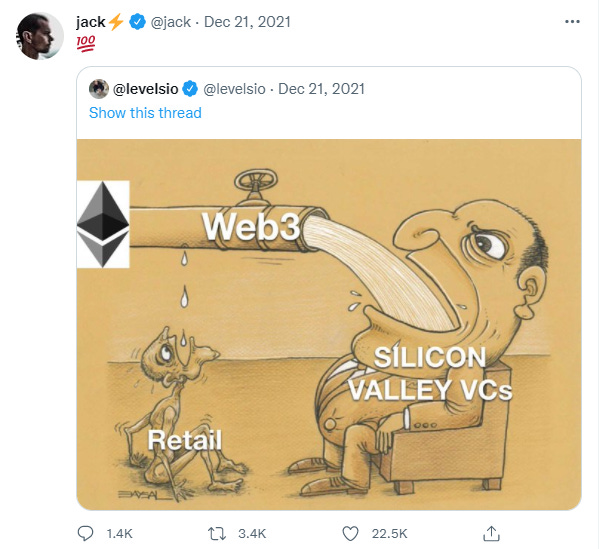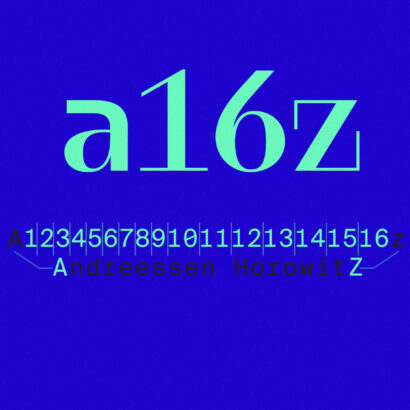If you follow crypto twitter and read tech news, you’ll have come across mentions of Web 3.0 by now.
Web 3.0 is fast approaching.
It may even already be here but like the future, it’s just not equally distributed.
Now no one knows exactly what “Web 3.0” is or how it will turn out because it’s a very much a work in progress. Different people have different definitions but they all tend to ascribe constraints onto a similar idea.
Right now, the web is highly centralized.
Tech oligopolies like Meta, Google, YouTube, Amazon and Microsoft control and monetize as much of our personal data as they possibly can.
Due to the erosion of American anti-monopoly laws, these companies control crucial chunks of the internet. Even if you don’t shop at Amazon, the websites you use may store data on Amazon Web Services (AWS).
While there are attempts at legislating these companies once again, this tends to move at a snail’s pace.
A few different open-source movements have cropped up to address these issues. These communities generally believe in a few similar concepts but may disagree in their execution and other minutiae. All of them strive towards decentralizing the internet by weakening our reliance on monopolistic tech companies and giving individuals more say in how the internet works.

@jack ——> @levelsio
Web 3.0 — May I Have the Definition, Please?
Through my experiences watching and participating in the annals of the world’s most extreme sport, the spelling bee, I’ve gained an appreciation for definitions. The best way to learn about Web 3.0 is by looking at the definitions used by different organizations. In truth, we are nowhere close to a working, highly adopted model of Web 3.0 and so like with “the Metaverse”, definitions will differ.
Each type of organization will look to imagine a decentralized web structure that fits their stakeholders and their needs.
For example, Gemini, a centralized exchange, describes a fairly centralized version while the Ethereum Foundation explores the virtues and limits of an Ethereum-based solution.

Gemini’s Web3 Definition:
Gemini is one of the world’s largest centralized cryptocurrency exchanges, used for exchanging Fiat with crypto. They proclaim that “Web 3.0 Puts Humanity First,” which honestly sounds like something Lex Luthor or Norman Osborne would say about their company. It highlights the distinct entities such as the Web3 foundation building upon decentralized applications for future use.
Gemini also argues that blockchain is ideal for Web 3.0 because it is open, trustless and permissionless.
It puts out a few predictions for what this internet may look like:
- Data connectivity through the semantic web
- Artificial intelligence is capable of determining user sentiment
- Visual immersion (i.e. virtual reality)
- Secure, ubiquitous data
This definition is ambitious and likely impossible to pull off for a few different reasons. First, it is internally inconsistent as the tenets of the decentralized web infrastructure don’t include any components that require the use of blockchain. Second, artificial intelligence is nowhere close to determining user sentiment and is pretty terrible at doing so; it has a similar racist history as the neurosciences and has yet to reckon with this past and present.
Visual immersion will be difficult to achieve because it would require widespread use and adoption of virtual reality: A technology with clunky headsets that are difficult to use for more than an hour and inaccessible to the blind community.
The Ethereum Foundation on Web 3.0
The Ethereum Foundation also has resources detailing and defining the potential advantages and disadvantages of Web 3.0 within the context of their blockchain. It defines these apps as parts of the internet that you can participate in without selling any of your personalized data.
The advantages of these dApps are easy to explain:
- Information is censorship-resistant
- Payments don’t require personal data or centralized gatekeepers
- Servers don’t go down
In addition, they discuss some of the most significant limitations towards enacting a decentralized web ecosystem, mainly the challenges of scaling and developing an intuitive user interface, accessibility and the cost of decentralizing data. Additionally, the decentralization may mean poorer performance of some web-based applications and services.
While this definition relies on the Ethereum blockchain, it can be broadened to other crypto ecosystems or even a structure that does not require a blockchain to function.
Cory Doctorow on Web 3.0
Cory Doctorow is a writer who is an expert on “Big Tech” and has made accurate predictions on the way that these companies sell our data and sell surveillance. At the Consensus 2021 meeting, he exclaimed that we needed to “seize the means of computation.” Doctorow explained that large technology companies push legislation and technology that benefits and enriches themselves.
A key to a Web 3.0 is the interoperability of different apps and protocols. “Once everyone’s on Facebook, that’s a strong reason to join Facebook unless you can talk to Facebook without being a member of Facebook,” Doctorow said. “And then you can talk to your friends without having Mark Zuckerberg looking at your underwear.”
This version of Web 3.0 doesn’t require any blockchains or cryptocurrency but rather focuses on “adversarial interoperability” and taking down these large monopolies. The idea of interoperability would also allow decentralized apps built using different types of code or using different utilities to communicate seamlessly. This version of Web 3.0 is more like Legos: many different decentralized services competing and cooperating on the internet.
Hurdles for Decentralized Web Infrastructure
How Decentralized Are We Talking?
Early iterations of Web 3.0 will need to grapple with the great centralization question. While decentralization has its advantages, should the ecosystem provide any nodes with some authority? OpenSea, for example, is running into several issues with work being co-opted and sold through the platform.
There is no means of recouping or censoring any work that is stolen or co-opted through traditional means; in a way, the impermanence and provenance of the decentralized blockchain can be problematic. Will some nodes retain some centralized authority or power to protect the users, or will it be the Wild Wild West?
Trustless Does Not Mean Trustworthy
The idea of using trustless or decentralized services, algorithms or technologies does not mean these services cannot be exploited. Though regulation of big tech companies has been a failure, there are some successes in creating user protections. One continued criticism of cryptocurrency and blockchain technologies that some believe are central to Web 3.0 is that the code in smart contracts can be exploited and even seasoned whales and collectors regularly fall for scams.
Even in a world that adopts a trustless system that does not use blockchain technology, we may need to deal with the same issue. How do we encode a standard for safety and security across different dApps, sites and services?
Decentralized Storage and Databases
Moving all the data stored in traditional centralized databases on the internet into decentralized storage will be quite challenging. From the blockchain perspective, writing data and code on-chain requires a lot of energy and cost. Additionally, that means the ledger will get larger and larger, posing other problems for whatever blockchain is being used.
While FileCoin and IPFS are built around decentralized digital assets storage, it does not store the information on-chain. In this version of the distributed web, people are incentivized to store and host data on their own computer. In essence, it fractionalizes data storage and prevents outages if one server goes down. Currently, IPFS consumes a lot of bandwidth and requires some tech know-how to set up a node.
Interoperability with the Traditional Web
Interoperability means that even if multiple providers or apps are offering similar services, it is easy to transfer or change your provider. Whether or not Web 3.0 is built on the blockchain, the different dApps and sites need to be able to function together.
The Facebook example means not needing to sign up for Facebook to message someone who has an account there.
The tech side means making sure different applications can co-exist and work with each other or that blockchains are compatible and in constant communication.
User Design and Accessibility
If we adopt a decentralized web infrastructure, it needs to be easy and intuitive for everyone. Right now, accessing IPFS, hosting your decentralized server, and participating in DeFi dApps is hard and mistakes can be costly and unforgiving in a crypto or blockchain scenario.
It also means that the services are radically accessible. Necessitating virtual reality means that Web 3.0 would be inaccessible at large to the blind community and others who need assistive technologies.
Web 3.0 Key Takeaways
Web 3.0 and the decentralized internet revolution are on their way. Without reaching any firm agreements, we can debate how soon it will arrive or what the infrastructure will look like all day long.
In general, the goal of Web 3.0 involves taking power away from centralized gatekeepers like Facebook, Amazon and Google.
At some level of decentralization, computing and data storage will be distributed across a large network of servers. This will prevent these companies from using and monetizing your data as they please.
Building Web 3.0 will require organizations and groups with different stakeholders and ideologies to cooperate in order to develop interoperability.
Centralized exchanges like Gemini envision a more centralized infrastructure while the Ethereum foundation has a more decentralized and nuanced view. Experts who believe that the decentralized web can even happen without blockchain are distinct from these perspectives.
The Bottom Line
There are many hurdles ahead of the decentralized web but if all goes well, it will change the way that the internet is used and relinquish our data from the strangleholds of Big Tech.
Let’s all hope it succeeds.





